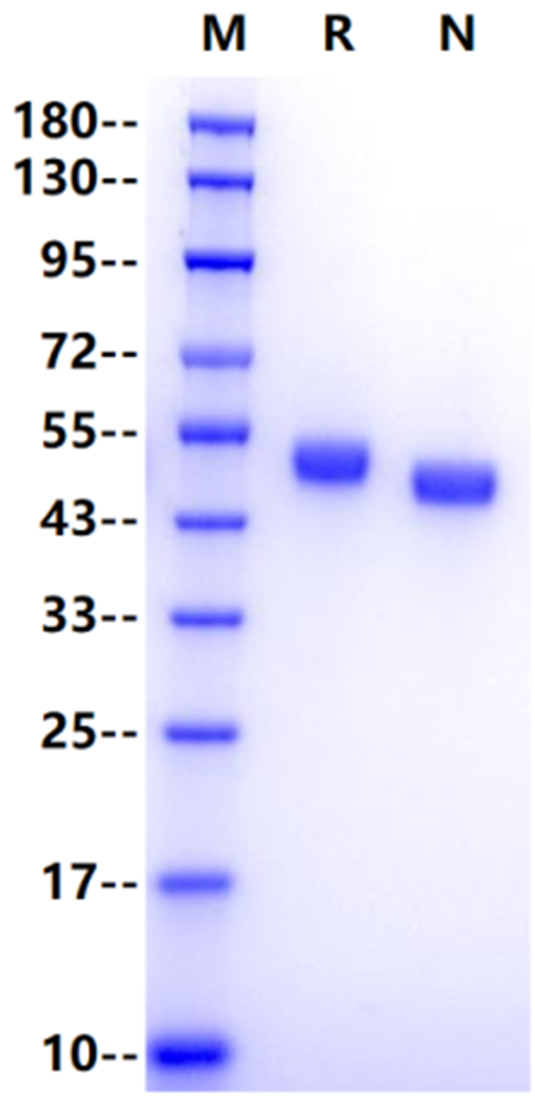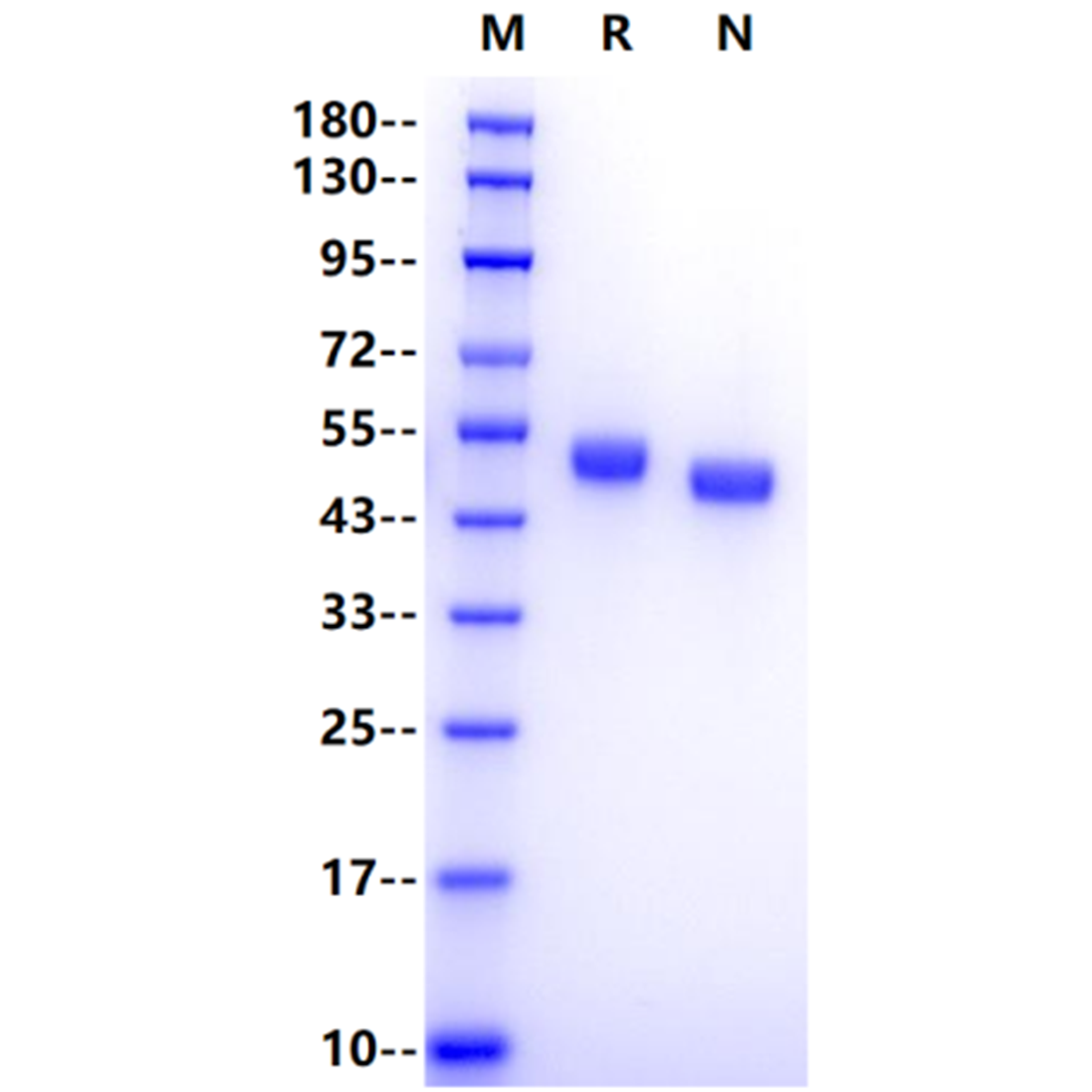1μg (R: reducing conditions, N: non-reducing conditions).
Product Details
Product Details
Product Specification
| Species | Human |
| Synonyms | RAGE, Receptor for advanced glycosylation end products |
| Accession | Q15109 |
| Amino Acid Sequence | Ala23-Ala344, with C-terminal 8*His AQNITARIGEPLVLKCKGAPKKPPQRLEWKLNTGRTEAWKVLSPQGGGPWDSVARVLPNGSLFLPAVGIQDEGIFRCQAMNRNGKETKSNYRVRVYQIPGKPEIVDSASELTAGVPNKVGTCVSEGSYPAGTLSWHLDGKPLVPNEKGVSVKEQTRRHPETGLFTLQSELMVTPARGGDPRPTFSCSFSPGLPRHRALRTAPIQPRVWEPVPLEEVQLVVEPEGGAVAPGGTVTLTCEVPAQPSPQIHWMKDGVPLPLPPSPVLILPEIGPQDQGTYSCVATHSSHGPQESRAVSISIIEPGEEGPTAGSVGGSGLGTLALAGGGSHHHHHHHH |
| Expression System | HEK293 |
| Molecular Weight | 47-54kDa |
| Purity | >95% by SDS-PAGE |
| Endotoxin | <0.1EU/μg |
| Conjugation | Unconjugated |
| Tag | His Tag |
| Physical Appearance | Lyophilized Powder |
| Storage Buffer | PBS, pH7.4 |
| Reconstitution | Reconstitute at 0.1-1 mg/ml according to the size in ultrapure water after rapid centrifugation. |
| Stability & Storage | · 12 months from date of receipt, lyophilized powder stored at -20 to -80℃. · 3 months, -20 to -80℃ under sterile conditions after reconstitution. · 1 week, 2 to 8℃ under sterile conditions after reconstitution. · Please avoid repeated freeze-thaw cycles. |
| Reference | 1.Vissing H., Aagaard L., Tommerup N., Boel E. Localization of the human gene for advanced glycosylation end product-specific receptor (AGER) to chromosome 6p21.3. Genomics. 1994;24(3):606–608. |
Background
AGER (advanced glycation end-product-specific receptor encodes a cell surface receptor for advanced glycation end-products (RAGE). This gene is located on the short arm of chromosome 6: 6p21.3. This locus is involved in inflammatory and immune responses and is also the locus of major histocompatibility complex III. Recently, sRAGE was demonstrated as a new biomarker for lung cancer and RAGE could be a potential therapeutic target in Alzheimer's disease. The genetic background of RAGE demonstrated that some gene polymorphisms are implicated in various pathological states, for example, diabetes complications, amplification of the inflammatory response, non-small cell lung cancer, gastric cancer, or breast cancer.
Picture
Picture
SDS-PAGE



